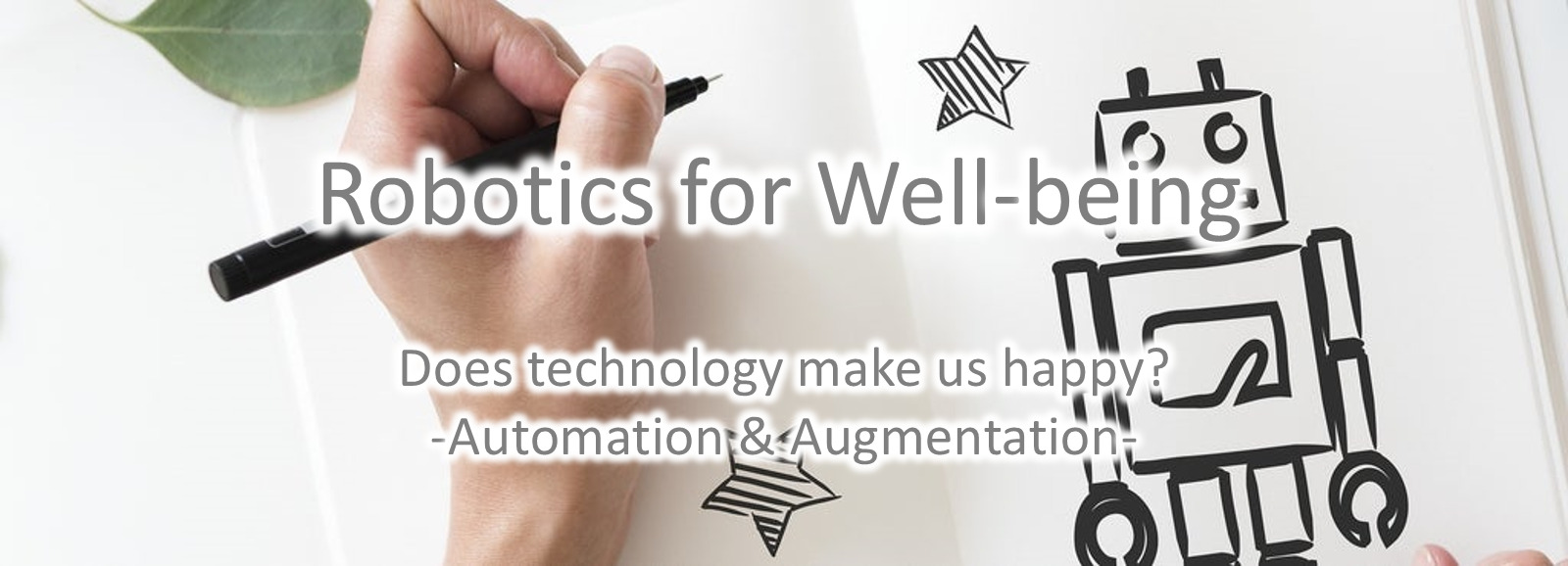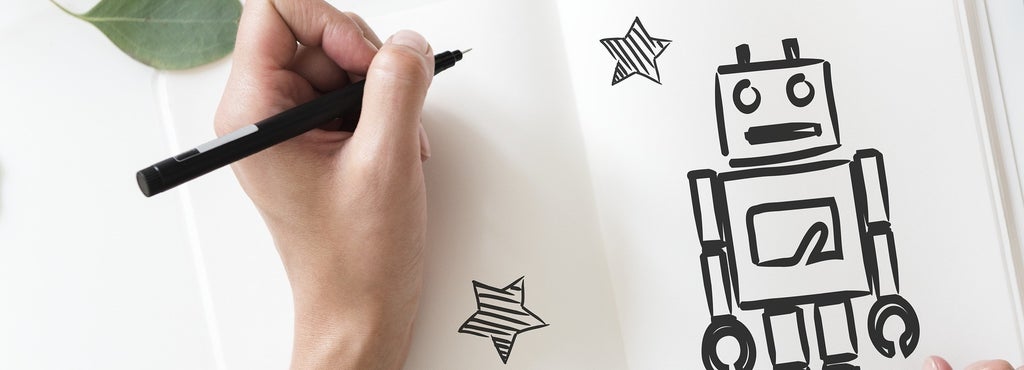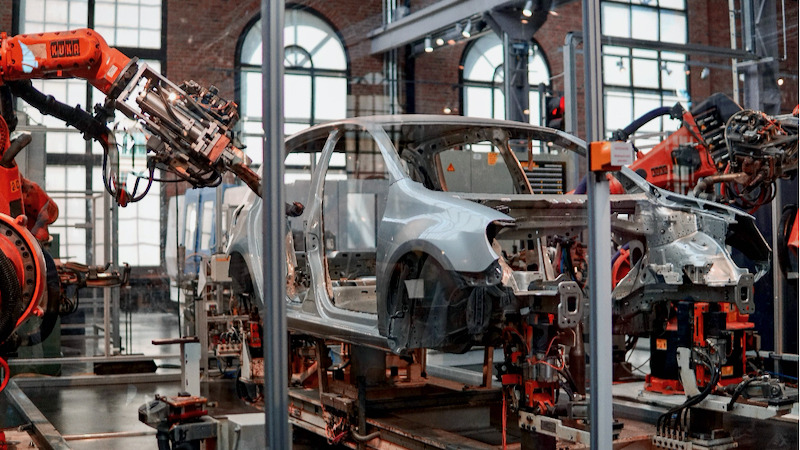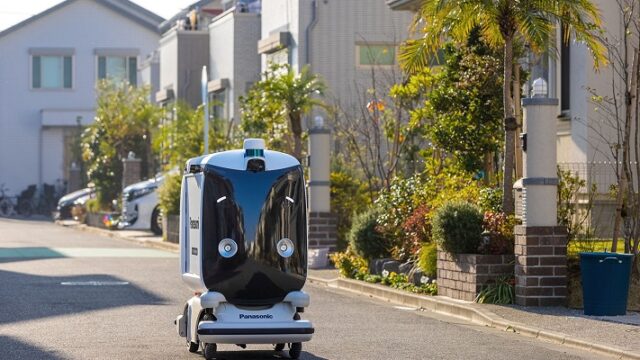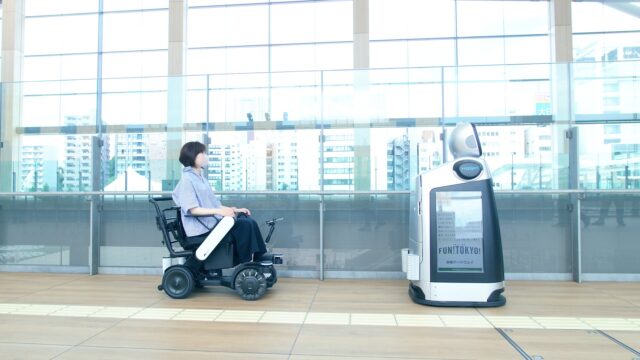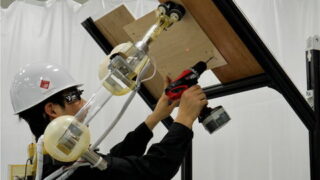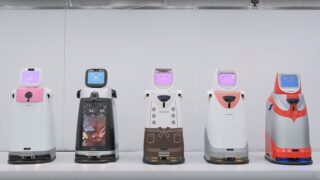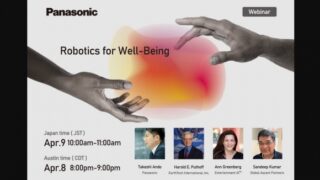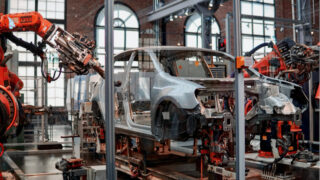In my last column, I introduced “What is a robot? and “What value do robots provide?”. The three values robots provide are (1) increased productivity through automation, (2) increased safety through remoteness, and (3) increased happiness through augmentation. I also stated that the mainstream of robots now and in the future will be (1) productivity improvement through automation. In this column, I would like to consider how the mainstream of productivity improvement through automation has evolved so far and in what direction it will go in the future.
Japan is the world’s largest producer of industrial robots
Robots have been developed mainly as industrial robots. The first industrial robot is said to be “Unimate,” which was put to practical use in 1960 by the U.S. company “Unimation” led by Dr. Joseph F. Engelberger.
Industrial robots began to be used in earnest around 1980, during the period of rapid economic growth, and by the 1990s, Japanese manufacturers accounted for about 90% of global sales, making the market the sole domain of Japan.
Since then, the production volume has basically been increasing steadily, despite economic fluctuations such as the Lehman Shock. Especially in recent years, the sales volume has been growing rapidly, doubling in the five years from 2013 to 2017.
https://ifr.org/news/global-industrial-robot-sales-doubled-over-the-past-five-years/
Although the percentage of robots made by Non-Japanese manufacturers has increased dramatically since 2010, as of 2018, more than 210,000 of the approximately 380,000 robots sold annually are still made by Japanese manufacturers. Japan is the world’s largest producer of robots.
The automotive industry is, and always has been, the biggest user of industrial robots. At the International Robot Exhibition held every two years, some of you may have seen the demonstration scene of a large robot arm swinging around a car. You may also remember the large number of red FANUC robots lined up on the production line at the Tesla factory, an electric car manufacturer.
There are so many industrial robots being used in the automobile assembly and welding scenes. It may be a bit of an exaggeration, but the growth of the automobile industry may have been supported by the use of industrial robots. On the other hand, there is no doubt that the growth of industrial robots would not be possible without the automobile industry.
Users in the automotive industry have invested in the development of robots because of their need to reduce manufacturing costs as much as possible or to operate more stably. In other words, industrial robots have been able to achieve their current high performance on a stable basis because their performance has been thoroughly extracted and used by users.
In recent years, robots have also been actively used in the electrical and electronics industries other than the automotive industry. The current number of robots in operation in the electrical and electronics industries is about 120,000 per year, which is about the same as that of the automobile industry.
On the other hand, despite the fact that many industries want to use robots due to the shortage of labor, the introduction of robots has not progressed sufficiently. There are several reasons for this lack of progress, but I think it can be summed up as a lack of cost effectiveness.
In many current cases, it is rare to see a dramatic improvement in productivity by introducing only one industrial robot. This is because even if a process is automated to a pinpoint, bottlenecks may occur in other processes, which may not affect the total productivity.
In order to increase productivity, it is necessary to consider the entire production line, using multiple robots as well as production facilities other than robots. In order to do this, it is not enough to simply buy a robot, but it is also necessary to seek the cooperation of a company that integrates robots and lines as a total system.
As a result, the required investment will increase. In the manufacturing field, where the payback period is said to be as long as three years and as short as one year, it is difficult to achieve cost-effectiveness. The number of industries and companies that are able to make such large investments has become few and far between.
Collaborative Robots to Expand Where Robots Can Operate
Collaborative robots are expected to break through this status quo. They are robots that work together with people, and with proper risk assessment, they can perform tasks next to people or while sharing a workspace. Conventional industrial robots can only be operated in a fenced environment to ensure safety.
Collaborative robots are expected to be able to replace human work even if only one robot is installed, and robots can be utilized with little investment. In particular, they are expected to be used in areas where robots have not been used in the past, such as the three industries of food, cosmetics, and pharmaceuticals.
The Danish company Universal Robot (UR) is making great strides in this area of collaborative robots. Since the commercialization of the world’s first collaborative robot, UR5, in 2008, the company has sold about 40,000 units and has a market share of about 60%, making it a major player in this field.
UR thoroughly considers how easy it is to use, even for users who have never used a robot before. The company is also active in offering free training sessions and training integrators.
However, there are few cases where simply replacing one person’s work with a single collaborative robot as a substitute for a person is profitable and productive. This is only possible in cases where the task being performed by the person is fairly simple and easy for the robot to perform.
This means that even when using collaborative robots, it is necessary to redesign the line to be suitable for collaborative robots, rather than simply replacing the existing human-only line with a single robot. It is difficult to get the most out of a collaborative robot unless you know its features, what it can and cannot do, and then design a total system to determine what to let the robot do and what to let people do.
In doing so, it is important to note that even things that seem easy for people to do can be surprisingly difficult or more costly than expected when you try to make robots do them. This gap is quite large between those who have been involved in robotics and those who have not.
Solving technical issues is necessary to expand the filed of application
As indicated at the beginning of this column, industrial robots have accumulated technologies in the process of manufacturing automobiles. Many of the objects that robots have handled in this process are metal or plastic parts that are designed in millimeter increments.
In contrast, in the industry where collaborative robots are expected, for example, the food industry, there are of course hard objects such as tableware, but there are also many soft objects such as Deep-fried chicken (Deep-fried chicken may be one of the hardest food items).
Let’s imagine the process of preparing a Lunch box with fried chicken. You have to be able to accurately recognize each piece of fried chicken from a large number of pieces of the same color, but no two pieces have the same shape. This is not an easy task for a robot, although a human can do it very easily.
How to handle such irregularly shaped flexible objects with individual differences at high speed and with accuracy at a practical level will be an important technical issue for robots to be used in many places in the future.
Japanese government is also investing in technological development to accelerate the introduction of robots into underutilized areas. One example is a project led by Japan’s Ministry of Economy, Trade and Industry.
Under the keywords of “Easy to Use” and “Easy to Develop,” the project is developing more general-purpose sensing units, arm control technology, and autonomous movement technology. In particular, we are coding a lot of control software using the Robot Operating System (ROS), which is the basic software for robots, and making it open source software (OSS), so that anyone can easily use the advanced technology even when introducing robots to unused areas.
Of course, this does not mean that the installation of robots to underutilized areas will not proceed unless these technical issues can be solved. In fact, the use of robots for automation has been progressing in many new fields, including actual installation and demonstration experiments.
For example, in the food industry, Connected Robotics, a Japanese venture company that develops cooking robots, is working with Japan Railway East to automate a soba (buckwheat noodle) restaurant in a train station. The robots will automatically carry out the processes of boiling, washing, and fastening soba. The robots may be able to control the boiling time, which determines the taste and texture of the soba, more accurately.
For serving and un-serving food in restaurants, KEENON Robotics in China has commercialized a robot called “Peanut,” which has already performed more than 9 million serving operations around the world. The introduction of these robots is expected to accelerate further, partly due to the growing need for non-contact service with the COVID-19.
We are not yet in a situation where every task can be completely automated, but there is no doubt that the number of tasks that can be automated is steadily increasing.
Robots are also sensors for DX.
The important thing is to make sure that we automate what can be automated in the areas that should be automated. To do this, we need to create an operating environment that makes it easy for robots to perform, rather than leaving everything to them. It will be even more important to link this automation to digital transformation (DX).
Another way to describe automation is that it is the use of machines with sensors to streamline operations. Moreover, the sensor acquires information as the interface closest to the object or person to be worked on in the physical world. There is no more valuable information than this.
Robots are also a tool to digitize everything that is being handled, when, where, what or who, and in what condition. We will only get closer to true automation if we make the most of this tool.
